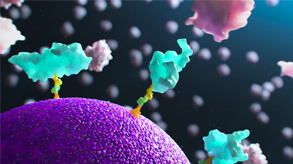A proteomics signature of NASH
A proteomics signature of NASH
Global prevalence of nonalcoholic fatty liver disease (NAFLD) is presently 30% and increasing. While the majority of afflicted individuals have a relatively non-progressive form, i.e., nonalcoholic fatty liver (NAFL), a significant subset with nonalcoholic steatohepatitis (NASH) are more likely to progress to cirrhosis.
No pharmacological therapies are currently approved for NAFLD or NASH, and liver histology is the reference standard for identification of those at increased risk of progression. Despite the requirement of liver histology improvement as an endpoint for regulatory approval, several factors limit applicability of biopsy in clinical development, including invasiveness and attendant risks, and sampling and observer variability and costs.
As such, there is a high unmet need for non-invasive tests that can robustly and reliably assess NAFLD for diagnosis, prognosis, and monitoring purposes. Large-scale profiling of serum/plasma proteins (proteomics) increasingly demonstrates utility to identify changes that accurately reflect and predict disease states and outcomes, including the fibrosis component of NASH that is driven by disease activity and remains the most robust histological marker of prognosis.
Recently, longitudinal assessment of over 5,000 serum proteins in 636 individuals with histologically confirmed NAFLD was used to develop and validate models for all four key individual liver biopsy components (steatosis, hepatocellular ballooning, lobular inflammation, fibrosis) and at-risk NASH, and with sufficient sensitivity and precision to characterize drug intervention-related changes. Taken together, these results support continued validation of such proteomics-based models and their promise to enable a “liquid biopsy” assessment of NAFLD.
Learning objectives
- Needs and applications of non-invasive testing for liver disease
- Basics of aptamer-based proteomics assessment and compared to standard clinical blood testing
- Current applications of proteomics biomarkers for unmet needs in NAFLD and NASH

Arun Sanyal, MBBS, MD
Director, Stravitz-Sanyal Institute for Liver Disease and Metabolic Health
Interim Chair and Professor, Division of GI, Hepatology & Nutrition
VCU Health System
A proteomics signature of NASH
A presentation by Arun Sanyal, MD, MBBS
More webinars
WebinarRethinking Neurodegeneration Through Blood-Based Biomarkers
Proteomics is reshaping how we predict, diagnose, and understand neurodegenerative diseases. In this roundtable, leading experts Tony Wyss-Coray, PhD, and Jacob Vogel, PhD, explore the power of blood-based biomarkers, from deep molecular studies to global-scale datasets using the SomaScan™ Assay. They discuss how protein signatures can reveal brain aging, predict dementia, and track changes in disease pathways over time, with moderation by Steve Williams, MD, PhD. Learn how cutting-edge proteomics is redefining what is possible in neurological research.
WebinarProteomics in Clinical Trials: Lessons from Semaglutide Treatment in Individuals with Obesity
Advancements in proteomic profiling have opened new avenues for understanding the complex mechanisms underlying obesity and its comorbidities. By measuring thousands of proteins at once, researchers gain a comprehensive view of an individual’s metabolic health, revealing subclinical processes and pinpointing potential therapeutic targets.
WebinarPathways to Digital Health: AI and Omics in Rheumatoid Arthritis
Explore how groundbreaking proteomic research is transforming our understanding of rheumatoid arthritis (RA). In this on-demand webinar, Allan Stensballe, PhD, shares new insights into the molecular landscape of RA-affected synovial tissue, revealing how autoantibodies and protein signatures may hold the key to more precise personalized therapies.





